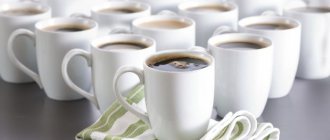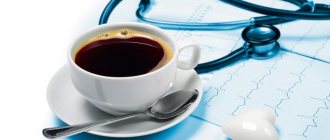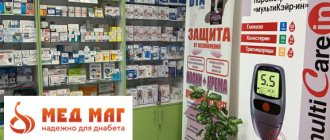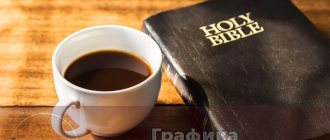Features of nutrition after a heart attack
In dynamics, the patient’s condition and needs change quickly:
- Immediately after acute myocardial necrosis, the body is weakened. In the intensive care unit, the patient does not require large amounts of food because his appetite is reduced or absent.
A decrease in the volume of circulating blood reduces the load on the heart, which helps accelerate reparative processes. Therefore, water consumption during this period should be kept to a minimum.You can give the patient frozen pieces of ice to suck on to suppress thirst.
- In the next few days, it is necessary to bring the volume of fluid consumed closer to the physiological norm. Positive dynamics in this process are indicated by stabilization of hemodynamic parameters. Nausea is a characteristic symptom of this period. To combat it, food is taken fractionally, in frequent small portions. In the early postoperative period, there is a risk of recurrent myocardial infarction. Therefore, the food you eat should be as neutral as possible. They will make her gentle:
- heating to human body temperature;
- grinding before use;
- no strong odor;
- neutral taste characteristics;
- exclusion of products that contribute to gas formation.
- At the end of five days from the onset of the acute episode, the patient should adhere to the principles of diet No. 10 according to Pevzner. HER recommendations are:
- eat 6 times a day at a slow pace;
- Avoid any physical activity before and after meals.
- Further, at the stationary stage, diet No. 10c (anti-atherosclerotic) is recommended. It is selected according to lipid profile readings:
- if chylomicrons predominate, fats should be sharply limited;
when cholesterol increases, only saturated lipids are limited;
- a large amount of pre-β-lipoproteins - halve carbohydrate intake.
- After discharge, it is necessary to continue to adhere to the principles of the anti-atherosclerotic diet. The patient should:
- follow a meal schedule (do not eat three hours before bedtime);
- reduce salt intake to 6 g per day;
- For the current month, completely eliminate alcohol from your diet and do not abuse it in the future;
- change your lifestyle in favor of healthy behavior (quitting smoking, physical activity to normalize body weight).
It is worth carrying out fasting days once or twice a week.
The consequences of diet failures can be a recurrent heart attack, stroke, angina attacks, and metabolic complications.
Table describing nutritional characteristics after a heart attack.
| Period | Energy value (Kcal/day) | Proteins (g/day) | Fats (g/day) | Carbohydrates (g/day) | Liquid (l/day) | Salt (g/day) | Recommendations |
| 1-5 day | 1000-1200 | 60 | 30-40 | 180 | 0,7-0,8 | 0 | The patient consumes grated products. |
| 5-20 day | 1600 | 60-70 | 50-60 | 220-250 | 0,9-1,0 | 1-3 | Take food at rest, slowly, 5-6 times a day. |
| After 20 days | 2000 | 85-90 | 70 | 290-330 | 1,1-1,5 | 5-6 | The motor mode has been expanded. |
Diet No. 10 and its feasibility
For those who have suffered an acute myocardial infarction, dietary table No. 10 according to Pevzner is allocated. Its main principles are:
Limit table salt to 3-6g per day. The requirement is determined by the ability of sodium to retain water in the body, which leads to an increase in the volume of circulating blood. The load on the heart increases, and the area of necrosis may expand.- Excluding foods that have a stimulating effect on the nervous system is necessary to prevent heart rhythm disturbances.
- Minimizing the consumption of foods high in saturated fat and cholesterol, which is important for maintaining maximum vascular patency and preventing complications of atherosclerosis.
- Reducing the amount of fast carbohydrates (sugar).
- Introduction to foods with high potassium content in the development of heart failure. This mineral has broad antiarrhythmic and diuretic (reducing blood volume) effects.
The effects of coffee on the body
The main mechanism of action of coffee is associated with the alkaloid – caffeine. It increases physical and intellectual activity, provokes processes of higher nervous activity, appropriates energy and helps concentration. Caffeine affects the cardiovascular system as follows:
- activates the vasomotor center;
- increases blood pressure with hypotension;
- increases heart rate, especially in large doses;
- blood flow through the coronary vessels first increases, then decreases;
- low amounts increase the strength of heart contractions.
Caffeine should be used for respiratory and cardiac depression, poisoning with sleeping pills and sedatives, asthenia and vascular spasm, migraine.
Negative consequences of coffee abuse include:
- sleep disturbance,
- frequent night awakenings,
- hand tremors,
- anxiety,
- excessive anxiety,
- nausea and vomiting,
- frequent and strong heartbeat.
Coffee is contraindicated in cases of severe atherosclerosis, cardiac decompensation, glaucoma and in advanced age (after 60 years).
Menu planning for men
- From the first to the fifth day, all products are served to the patient in a ground form. Recommended for use:
- Carbohydrates: white dried bread, cereals (oatmeal, rice, buckwheat), fruits (baked, grated).
- Proteins: boiled veal, chicken; lean fish (pike perch, cod), egg white (boiled or steamed).
- Fats: vegetable oil, a small amount of homemade butter.
- Fiber: fresh vegetables - grated carrots, boiled - beetroot, zucchini, cauliflower puree.
- First courses: lean soups.
- Drinks: rosehip decoction, coffee surrogate, vegetable and fruit juices (in small quantities), fermented milk products.
- From days 5 to 20, the same list of dishes is recommended, but the food is no longer crushed.
- In the fourth week and in subsequent periods, the diet menu after myocardial infarction for men expands. Allowed:
- yesterday's bread (white or rye) – up to 250 g per day;
- meat and fish (reduced fat content) in one piece;
- cheese (not too salty and fatty);
- a small amount of pasta;
- soaked herring;
- jellied meat and fish;
- lean ham;
- milk jelly, jam, honey, jelly (up to 50 g of sugar per day);
- fruits (kiwi, apples, pears) and berries without heat treatment;
- casseroles (cottage cheese);
- fruit drinks, fruit and vegetable juices;
- coffee drinks, tea (low strength).
The list of dishes should be kept in a visible place. If you use your imagination, it will not be difficult to come up with a recipe that meets the patient’s tastes.
For a long period, patients are forced to take warfarin. The effect of the anticoagulant may vary depending on diet:
Tonic drinks (contain quinine) and alcohol enhance the effect of the drug, and potassium-rich foods (green vegetables, dried fruits) reduce the thinning ability of the drug.
Tips for drinking coffee
In order to get the maximum benefit from the drink, you need to follow a few tips:
- Do not drink instant coffee (contains chemical additives).
- For brewing, use medium-roasted beans (benzopyrene appears when heated too high).
- Do not allow it to boil during production.
- Be sure to pass the finished drink through a cardboard filter (the content of caffestrol, which increases cholesterol, is reduced).
- The highest daily dose is 3 cups.
- Along with a cup of coffee, you need to drink a glass of unstained water.
- The best time for coffee is 1 hour after breakfast or lunch.
If you have heart pain, palpitations or shortness of breath, or sleep disturbances, drinking coffee is contraindicated. Also, you should not try to cheer yourself up with caffeine in large doses after a sleepless night or intense physical activity, because in such cases you can get the opposite effect and have a negative effect on the cardiovascular and nervous systems.
Coffee has a stimulating effect on the strength and frequency of heart contractions when consumed in moderate doses. After a myocardial infarction, admission is possible only after consultation with a cardiologist. If you have hypertension and tachyarrhythmia, it is better to avoid caffeine-containing drinks. In order to prevent toxicity from toxic compounds, it is necessary to brew ground grains correctly.
What foods should you exclude?
Dishes high in salt, saturated fats and fast carbohydrates are unacceptable. The following are excluded: baked goods (rolls, pancakes, donuts, pastries, rolls, cakes, pies), fatty meat products (lard, boiled pork, brain, kidneys), fish (salted, smoked), broths (based on meat, mushrooms), chocolate , coffee, tomato juice.
In the early period, foods that promote gas formation are prohibited: tomatoes, cabbage, legumes.
What is recommended to enrich the diet with?
You can and should eat foods that promote rehabilitation after a heart attack:
- Fatty sea fish (omega-3 fatty acids reduce the risk of recurrent necrosis of the heart muscle).
- Yellow, red, green vegetables (antioxidants prevent the accumulation of toxic under-oxidized metabolic products in the body).
- Dried apricots, raisins, dates (a source of potassium - a heart rate stabilizer).
- Seafood (contains microelements that stabilize the rheological characteristics of the blood).
conclusions
A history of myocardial infarction requires the same strict approach to diet as diabetes mellitus. For such patients, nutritional rules have been developed, which are presented in diet No. 10 according to Pevzner. Also, booklets with prohibited foods and examples of recommended dishes are distributed among patients.
Skillfully prepared diet food will be tasty, albeit simple. The harm from fatty and sweet foods at this stage is not comparable to the whims of appetite. Alcohol should be completely abandoned for the first month, and later give preference to its more noble types (wine) in limited quantities.
The principles of diet after a heart attack and stenting for men and women are almost the same. The only common goal of action is to reduce blood cholesterol levels and prevent complications of atherosclerosis.
Research by scientists
For about 10 years, scientists and cardiologists from the University of Massachusetts observed patients who had suffered a heart attack. Those people who drank coffee in moderation lived longer on average than those who preferred tea or other drinks. Over the entire period of control, those patients who drank a cup of coffee daily had an almost 50% lower risk of sudden death.
Scientists from South Korea expressed a similar opinion. The study included more than 25,000 healthy men and women. They measured the level of calcium in the coronary artery, which directly affects the risk of blockage of the coronary vessels and, consequently, the possibility of a heart attack. After analyzing people's habits, including the level of coffee consumption, scientists found that those who drink 1-2 cups a day have more elastic blood vessels and less calcium deposits.
Interestingly, increasing the amount of coffee to 3-5 cups per day did not have a better effect. Perhaps this is due to the large amount of caffeine, which in this case constricted blood vessels.
The explanation for the data obtained as a result of research is in natural substances that are contained specifically in coffee. And it’s not just about caffeine; it is found in approximately the same volumes in tea, but also in natural acids, vitamins, microelements, and antioxidants. They have a positive effect on the ability of blood vessels to be elastic and cleanse them from the inside.










